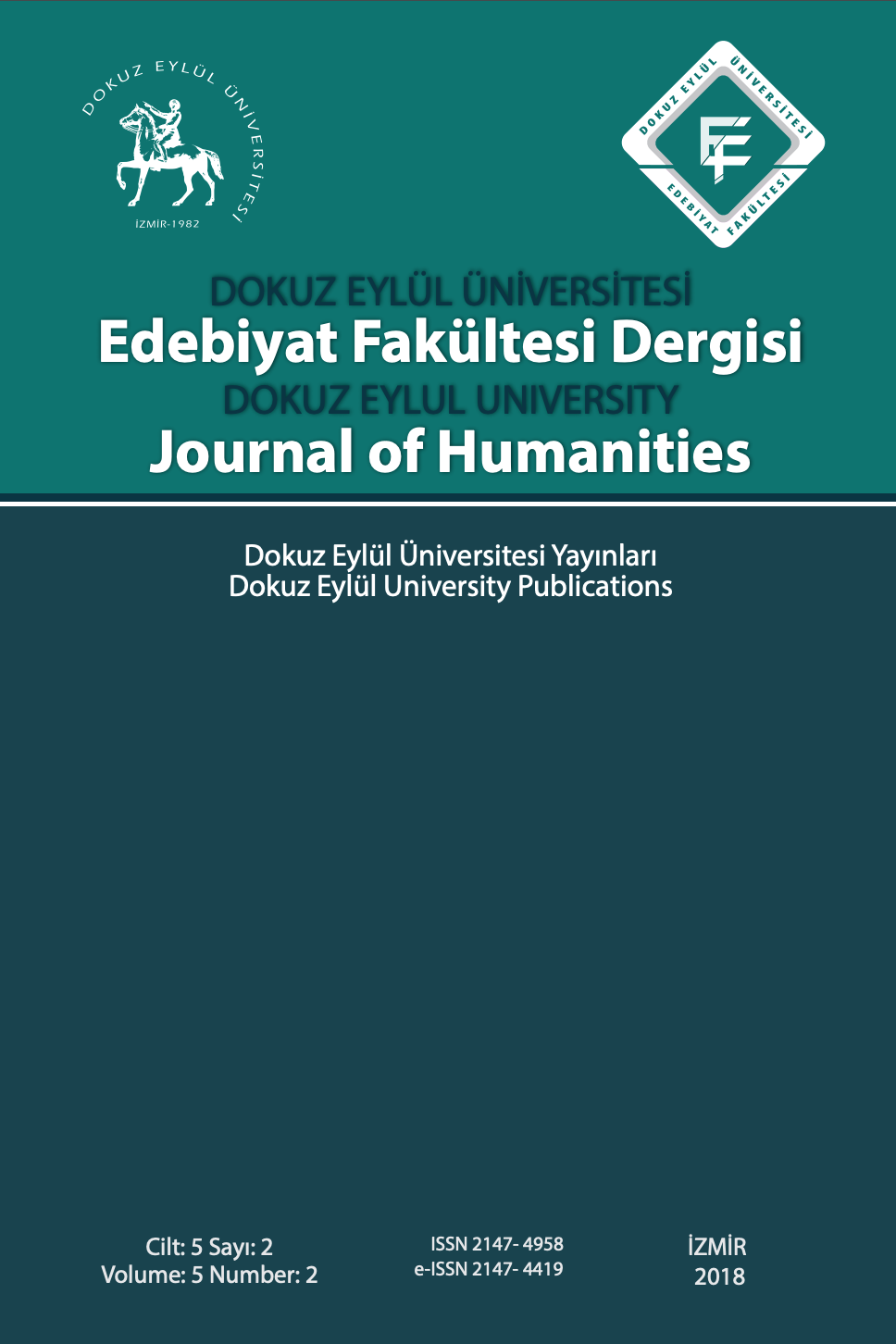4. VE 6. YÜZYILLARDA ERMENİLERİN BİZANS ASKERİ TEŞKİLATINDA YER EDİNMELERİ VE ARMENIA’NIN İDARİ DÜZENLEMESİ
4. yüzyılla birlikte Bizans ordusu Doğu’da Sâsânîlere karşı ordusunun içine Ermenileri aşamalı bir şekilde almaya başladı. Ancak asıl büyük dalga 6. yüzyılda I. Iustinianos devrinde oldu. I. Iustinianos (527-565) devleti tekrar pagan Roma devrindeki gibi militerleştirdi ve Armenia’da bu dönüşüme maruz kaldı. Ermeniler, bu disiplinli yapılaşma karşısında isyanlarda bulunsa da Bizans sistemine boyun eğdiler ve bu dönemden itibaren Bizans ordusu üzerinden imparatorluk dünyasına giriş yaptılar. Bu çalışmadaki amacımız Bizans ordusu içinde - özellikle I. Iustinianos döneminde - bulunan Ermeni kökenli ve Armenia coğrafyasından gelmiş olan kişilerin tespitini ve ordu içindeki önemlerini göstermektir. Ayrıca I. Iustinianos döneminde yapılan ve selefleri tarafından devam ettirilen Armenia'nın idari organizasyonunun nasıl düzenlendiğini göstermektir.
Anahtar Kelimeler:
Roma, Bizans, Ermeniler, I. Iustinianos, ordu
ARMENIANS' PLACE IN THE BYZANTINE MILITARY ORGANIZATION IN THE 4TH AND 6TH CENTURIES AND THE ADMINISTRATIVE ARRANGEMENT OF ARMENIA
By the 4th century, the Byzantine army began to gradually recruit Armenians into its army against the Sassanids in the East. However, the real big wave happened during the reign of Justinian I in the 6th century. Justinian I (527-565) would militarize the state again as in pagan Roman times, and Armenia was subjected to this transformation. Even though there were revolts against this disciplined construction, the Armenians submitted to the Byzantine system, and from this period they entered the imperial world through the Byzantine army. Our aim in this study is to identify people of Armenian origin who were in the Byzantine army - especially during the reign of Justinian I - and to show their importance in the army. It is also to show how the administrative organization of Armenia, which was made during the reign of Justinian I and continued by his predecessors, was organized.
Keywords:
Rome, Byzantium, Armenians, Justinian I, army,
___
- Adontz Nicholas, (1970). Armenia in the Period of Justinian, çev: Nina G. Garsoian, Lisbon: Gulbenkian.
- Ammianus Marcellinus. (1936). c.II, ed-çev: John C. Rolfe. HUP.
- Ayvazyan, A. (2014). The armenian military in the byzantine empire – conflict and alliance under Justinian and Maurice – Sigest. Bournoutian A. George. (2006). A Concise History of the Armenian People¸California: Mazda.
- Charanis, P. (2021). Bizans İmparatorluğu’nda Ermeniler, çev: Engin Öztürk. Urzeni.
- Dedeyan Gerard. (2015), Ermeni Halkının Tarihi, çev: Şule Çiltaş, İstanbul: Ayrıntı.
- Ghazar P’arpec’i. (1985). History of the Armenians, çev: Robert Bedrosian, New York.
- Grousset, R. (1973). Histoire de l’Arménie des originas à 1071. Payot.
- Honigmann, E. (1935), Die ostgrenze des byzantinischen reiches. Librairie Orientale.
- Kazhdan Alexnder, (1991). The Oxford Dictionary of Byzantium, c.I.II.III, New York: OUP.
- Lemerle Paul. (2016). Bizans Tarihi, b.7, çev: Galip Üstün, İstanbul: İletişim.
- Luttwak Edward. (2009). The Grand Strategy of the Byzantine Empire, Cambridge: HUP.
- Novellae Contitutiones. (1717). ed: Johann Friedrich, Principi ac Domino.
- Ostrogorsky Georg. (2011), Bizans Devleti Tarihi, b.7, çev: Fikret Işıltan, Ankara: TTK.
- Öztürk, E. (2020). Bizans döneminde Anadolu’da Ermeniler. Urzeni.
- Procopius. (1961). History of the wars, c.I, ed-çev: H.B. Dewing. HUP.
- Procopius, (1961). Buldings, c.VII, ed-çev: H.B. Dewing, Cambridge: HUP.
- Treadgold Warren. (1997). A History of the Byzantine Satete and Society, California: SUP.
- The Armenian History attributed to Sebeos. (1999). çev: RW. Thomson, Liverpool: LUP.
- Umar Bilge, (193). Türkiye’deki Tarihsel Adlar, İstanbul: İnkılâp.
- ISSN: 2147-4958
- Yayın Aralığı: Yılda 2 Sayı
- Başlangıç: 2011
- Yayıncı: Dokuz Eylul Üniversitesi Matbası
Sayıdaki Diğer Makaleler
JULIAN BARNES’IN THE NOISE OF TIME ADLI ESERİNDE HAFIZANIN İŞLEVİ VE TRAVMAYLA BAŞA ÇIKMAK
ALEV LYTLE CROUTIER’NİN YEDİ EVİN SIRLARI ESERİNDE ABD’NİN TEMSİLİ
“MACBETH” OYUNU TİYATRO AFİŞLERİNİN GÖSTERGEBİLİMSEL ÇÖZÜMLEMESİ
Burcu TUFAN, Kamil İŞERİ, Sibel ÇAPAN TEKİN
AĞIT VE ŞİFA: WALLACE SHAWN’UN THE DESIGNATED MOURNER OYUNUNDA RİTUEL
NİZAMEDDİN ŞÂMÎ VE ŞEREFEDDİN ALİ YEZDÎ’NİN ESERLERİNDE “OSMANLI” ALGISI1
TARİH ARAŞTIRMALARINDA SÖZLÜ TARİH YÖNTEMİ VE ÇEVRİMİÇİ SÖZLÜ TARİH ARŞİVLERİNDEN ÖRNEKLER
MAĞRİB VE ENDÜLÜS’TE BERBERÎ HÂKİMİYETİNİN MİMARLARI: ABDULLAH B. YÂSÎN VE YÛSUF B. TÂŞFÎN
AKADEMİK SÖYLEM VE ÖRNEKLEME: FEN VE SOSYAL BİLİMLER MAKALELERİNDE ÖRNEKLEME BELİRLEYİCİLERİ
